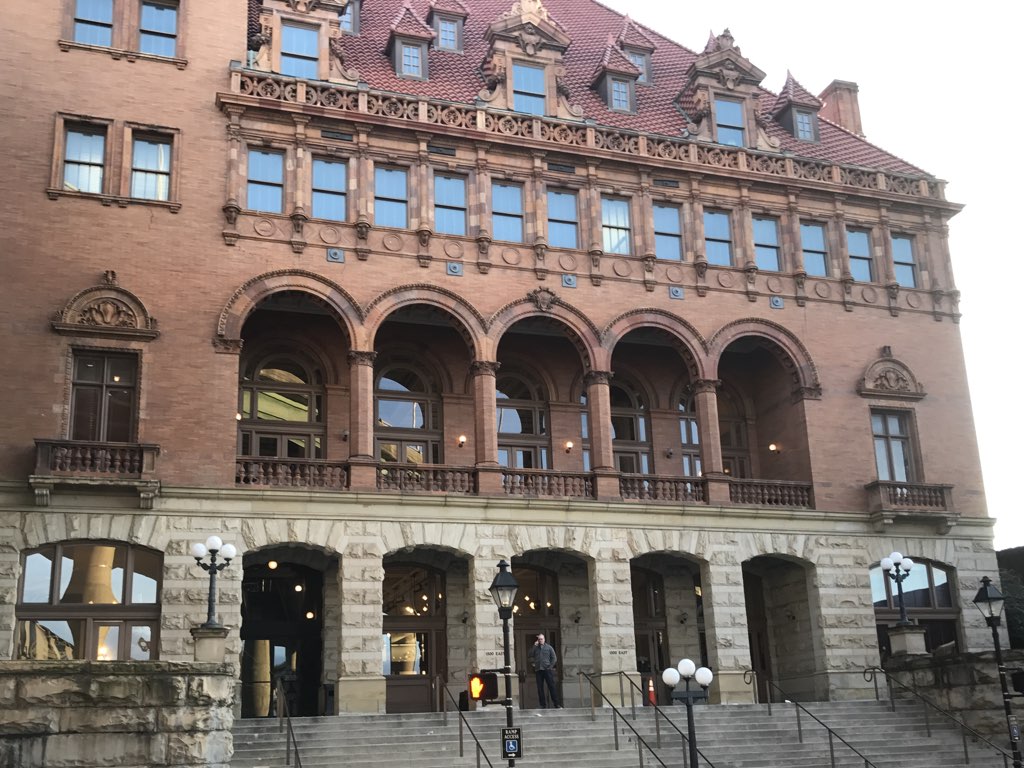The City of Richmond seeks assistance developing an innovative approach to development in the Shockoe Bottom district that leverages its existing infrastructure, integrates and illuminates its significant and neglected history, and creates a framework for sustainability for the parts of the area that lie within the flood plain. Through this approach, the City hopes to explore and pioneer the notion of an “eco-historic district” in Shockoe Bottom.
Richmond today receives accolades for its flourishing culinary scene, affordable cost of living, dynamic artistic community, growing levels of entrepreneurship, and investment from new companies. But while many are thriving, there is still a great deal of disparity: too many under-performing and dilapidated public schools, a high concentration of public housing in poor condition, and 40 percent of families with children living in poverty.
As the former capital of the Confederacy during the Civil War, Richmond has also been at the center of debates about the future of its Confederate statues. Mayor Levar Stoney initiated a Monument Avenue Commission to investigate ways to contextualize these monuments (along Monument Avenue, which is in a different part of the city than Shockoe Bottom).
While its Civil War history is very visible, the scale of acknowledgement of the history of Richmond’s role in the slave trade (it had the largest slave market in the eastern US, second nationally only to New Orleans, from 1830 to 1860) is much smaller—but has increased significantly in the last decade. Recent efforts to acknowledge this aspect of Richmond’s history include:
- an archeological dig at Lumpkin’s Jail (the site of its horrific slave holding facility—Solomon Northup, author of “12 Years a Slave,” was held here in 1841),
- an investment toward creating a Slavery Trail (a proposed self-guided walking trail of the history of the movement of enslaved Africans to and through Richmond),
- the installation of a Reconciliation statue, and
- a partnership to create a museum to honor the site’s untold history, as well as the unveiling of a monument to African American entrepreneur Maggie Walker (the first female bank president of any race to charter a bank in the US) in the summer of 2017.
The site of Lumpkin’s Jail is just three blocks from where the Virginia Capitol building sits today, just east of downtown along the James River in Shockoe Bottom, one of the city’s oldest neighborhoods. Located between Shockoe Hill and Church Hill, much of the 129-acre Shockoe Bottom district has been razed and paved over. The tunneled Shockoe Creek beneath it is also a combined sanitary and storm sewer conveyance to the James River.
There has been significant investment in Shockoe Bottom in the last two decades. The City, with state and federal assistance, has invested more than $90 million in the renovation of the Historic Main Street Station, the site of the future museum and memorial at the Lumpkin’s Jail site with committed investments from the city and state of $11 Million in 2006, and $22 million in stormwater improvements (a study determined the cost of daylighting the creek was not feasible). But there are still numerous surface parking lots and vacant store fronts, and property owners are reluctant to develop or asking for more for higher sales prices than the market will currently bear. As much of the district still lies within the FEMA 100- and 500-year flood plains, the aspect of sustainable infrastructure and development will be a key component for any future development in the area.
One of the greatest challenges is how to balance community interest in the preservation of historical sites while creating a viable economic platform to create growth and opportunity, and investment that will increase tax revenue in the area. Unsurprisingly, there have been several unrealized efforts to revitalize the area with development, including a polarizing plan by the previous administration to build a minor league baseball park. The comprehensive development strategy that was created prior to the baseball debate was never implemented.
As a nationally significant historical site, the opportunity to create a cultural tourism destination that balances the environmental needs of the area is a challenge that also inspires the Stoney administration to envision a future for Shockoe Bottom that can achieve all of these goals. The City is seeking guidance from the Rose Center on the following questions:
- How can Richmond use this site to repair the urban fabric between downtown and neighborhoods to the east, with Interstate 95 and the railroad currently inhibiting access and prohibiting a positive sense of place?
- Can we consolidate the land with the other owners and incentivize it to offset the significant land purchase cost? What are our best partnership opportunities here?
- What types of development are feasible in and around the floodplain? Is there a remediation cost?
- What sustainable stormwater management techniques could be applied around this site to benefit local water quality and create beautiful spaces?
- How can the City memorialize the site of the slave jail and African burial ground in a meaningful way? What does appropriate development—and the physical transition into it—look like in this context?
- How can we best incorporate the arts into future and existing infrastructure investments?
- How can the City balance some residents’ desire for green space with other priorities, such as tax revenue and parking?




